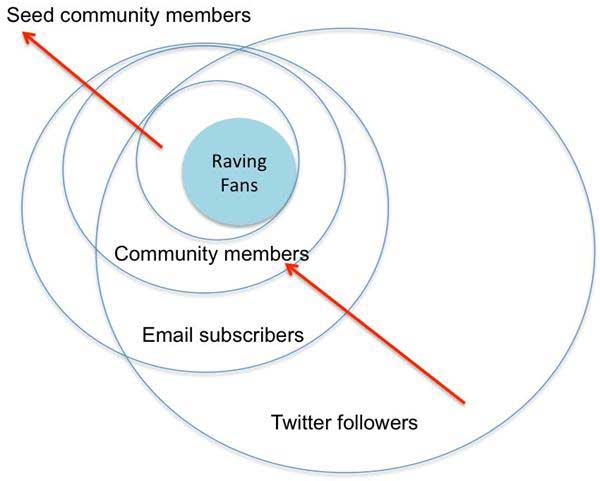Not all that long ago (think 2002), people would think you were crazy when you talked about the powerful intersection of community and content. Online communities? Those died in the dot com bust. And content? Like, copy?
Today, marketing professionals and their bosses are starting to come around, but they still have a ways to go. Few people fully grasp how the interplay between content and community can change how organizations function internally and externally.
Previous articles in this series have addressed content, so let's now turn our attention to community.
Today, the role that community can play in the marketing and communications process is woefully misunderstood. Many organizations are not actively involved in community efforts, and those that are tend to focus on community for one of three reasons:
- Support: Enabling customers and advocates to support and inform each other, providing self-serve customer service, or offering support via social network monitoring (e.g., Comcast's efforts via @comcastcares)
- Reputation: Intersecting with communities, social network presences of interest, and influencers in an effort to build reputation
- Research: Using small private communities like a marketing petri dish—a closed, controlled space where customers can be studied
The real value of customer communities, however, is quality and efficiency—efficiency of reach, feedback, communication cycles, and amplification.
People who share information with people they know tend to be likeminded or similarly focused. (You don't send an IP migration whitepaper to someone unless you love the content, and you're pretty sure they're interested.) In communities, you have many of those people in the same place. The amplification power is massive, and it's underutilized because companies and brands insist on sending corporate messages instead of customer-oriented information experiences.
We are still missing the true power and potential of customer networks despite much research proving the link. Why is that? Here are a few reasons:
- The insufficiency of the word "community." We don't yet have a better word to describe the complex set of interactions that occur on a continuum that includes everyone from a lapsed subscriber on an email list to a Twitter follower, a raging fan, a repeat customer, and a highly active member of a discussion board or social network. Is an email list a community? Is a blog?
- The perception that selling is bad. Communities are not, in fact, sacred spaces where the distasteful act of promoting your wares is unwelcome. Selling is not bad; selling out of context is bad. Think about it: If your refrigerator just broke, ads for refrigerator repair or a buying guide on new refrigerator features will seem pretty compelling. As a brand, you want to identify that behavior, and get potential customers to the information they need or the action they need to complete.
- Complexity and multiplicity of roles. It's not enough anymore to say "customer support community" or "prospecting blog." Someone who subscribes to an email list may have been a customer for six years but may also still be a prospect, an advocate, and a content contributor or sharer. In other words, depending on their goals and information needs on a given day, people will play different roles that don't line up neatly with marketing personas.
- A shift away from silo-based, campaign-based marketing. That shift forces the realignment of customer experience and prospecting programs. And nothing moves more slowly than organizational change. However, those companies that are nailing the shift to communities (e.g., Salesforce) are vaulting over their competitors in customer loyalty, growth, and insight.
- The perception that customers and prospects do not want to interact with branded communities. That is absolutely not true. Our experience and research demonstrate that customers are hungry for ways to interact with brands and companies outside of a sales conversation, and that they participate and engage when they see unique value.
Digital customer behavior reveals a connection between community and content. That connection creates a virtuous circle: Value-added content attracts community; community produces, vets, interacts with, shares, and talks about content; those activities can motivate new community members to join a list to receive more content, or participate at a deeper (or shallower) level.
It's not always easy. Here are four key lessons I've distilled from leading more than 100 successful community engagements:
1. Plan the right sequence and cadence of intersection points with customer networks and communities
Communities and community members have natural and repeated lifecycles. Do you map them? Do you know how long someone will likely remain a community member? New moms, for example, are new moms for about 24 months, so you'd better be planning acquisition cycles on a regular basis if they are your blog's audience.
2. Line up the right resources
Do you have the right executive support? You will need proactive (outbound communication), reactive (responsive communication), and value-added interactions with your community to keep it alive and fresh. Over the next decade, skills facilitating those interactions with customers will be in high demand.





